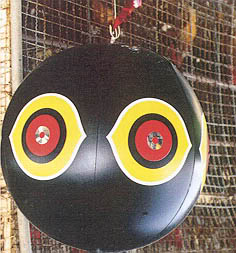Farmers are often gifted technical innovators. The technology they develop is very useful because it uses low-cost resources available on local farms. However, knowledge of these innovations is often restricted to a small area. FFTC is surveying and collecting this technology so it becomes more widely known.
This survey had the aim of collecting and disseminating low-cost indigenous farming related to livestock production.
 Introduction
Introduction
Although many valuable items of technology have been developed by research institutions, they are often too expensive for small-scale farmers to be able to adopt them. The Center feels that labor-saving farming methods based on low-cost inputs which are locally available are often more suitable for small farms than the technology developed on research stations, and can make an important contribution to the sustainability of small farms in the region.
A survey was carried out of livestock production in four countries: Taiwan ROC, Korea, the Philippines, and Thailand. It was found that in the countries surveyed, farmers have developed their own low-cost livestock technologies which take advantage of the local environment and resources. Of the 76 items collected, a number have already been adopted in several countries, either because knowledge of them has spread or because they were invented independently in several different places. Some technologies were limited to a single small locality, but could easily be used elsewhere with little or no adaptation. The Center will be particularly concerned to disseminate such technologies so that farmers elsewhere in the region can benefit from them.
Bamboo
Bamboo is widely used for many purposes all over the region: to make cages and perches for poultry, salt licks for cattle etc. Pieces of used rubber tire are becoming almost as common a raw material, cut into shape and used as containers for feed and water.
Old Rubber Tires
Ingenious farmers are constantly finding new uses for used rubber tires. Used tires are being used by some Korean cattle raisers as a form of bedding for cattle. The tires are laid close together on the floor. The inside of the tires are filled with rice husk or sand, to make comfortable cushions for animals which would otherwise be lying on concrete flooring. Abandoned used tires are often left lying around as rubbish in rural areas. This kind of recycling turns them from an eyesore to an asset.
Another modern industrial product which is being recycled by farmers is old metal containers, which some farmers in Taiwan are using as pig sheds, fitted with fans and water troughs.
Herbal Medicines
The use of medicinal herbs is an ancient tradition in Asia. It is hardly surprising that Asian farmers are treating their sick animals with herbal remedies. This is particularly common among small-scale farmers, who sometimes find it difficult to afford modern veterinary treatments. Some of the herbal remedies used by Korean cattle farmers include: juice squeezed from pine needles for diarrhea; inhalation of smoke from burned dried mugwort, as a treatment for cattle bloat; and the use of a homemade oil made from stingray intestines, applied to the skin to treat ringworm.
Local Feed Resources
Commercial livestock feed is expensive, and feed costs may be 70% of total production costs. Many Asian farmers are using a wide variety of leaves and other local materials for livestock and poultry feed. In the Philippines, bunches of grass and leaves are often hung near sheds and posts, where animals can get easy access to them without trampling them. Duck producers in the Philippines are using freshwater snails gathered from lakes and rice paddies as a duck feed. These snails are a good source of protein and very cheap, while the snail shells provide minerals for laying ducks. The eggs of ducks eating the snails are thick and strong, and do not break easily. Another advantage is that the snails gathered from rice paddies are often golden snail, a common pest of rice plants.
Keeping Out Birds and Goats
The survey team found many other interesting and diverse technical innovations by livestock farmers. In the Philippines, farmer are protecting trees from goats by painting the trunk with manure slurry. This discourages the goats from nibbling the bark. Poultry raisers in Taiwan are hanging large balloons painted with ghostly eyes outside their poultry houses. Their purpose is to scare away the wild birds which fly into the houses, stealing poultry feed and spreading disease.
Source and Photo: Food & Fertilizer Technology Center

